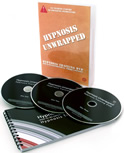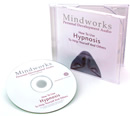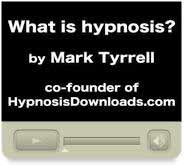Hypnosis - The Power of Imagination

Hypnosis is a way to access the power of your own imagination. It puts you into a state of mind where you are far more open to simple suggestions. Suggestions that will help you to change your old ways of thinking and behaving.
The secret is in finding the right idea and translating that into something that the deep unconscious part of your mind can easily understand.
Motivation To Change
It is not just knowing what you have to change and it is not just knowing what you have to do. You have to know how to do it and then take some action. You might know that you need to take some exercise and that you should do it every day but will you want to do it when it's raining hard outside and you can stay warm and comfortable at home?
You need to use your imagination because your imagination is powerful. You need to really 'feel' how you will benefit. There are many ways to activate your imagination, but hypnosis is particularly good.
 Hypnotherapy is the use of this hypnotic (trance) state to make changes to behavior and habits.
Hypnotherapy is the use of this hypnotic (trance) state to make changes to behavior and habits.
"One small change can gather momentum and like a snowball rolling downhill can eventually make an enormous difference. To make big changes in your life, all you need is to deliver exactly the right idea at the right time."
Modern hypnotherapy incorporates many therapeutic techniques that have proven to be effective. Cognitive Behavioral Therapy (CBT) and Neuro Linguistic Programming (NLP) can both be used successfully with hypnotized subjects.
Hypnotic subjects respond differently to suggestions so having a varied repertoire of techniques is a definite requirement for any hypnotherapist.
The core therapy though, still involves using the characteristics of the unconscious mind to create changes based around the character and experiences of the hypnotic subject. Ideally, all therapy is very specifically tailored to the individual.
There are two principle types of hypnotherapy; direct and indirect. These terms can be confusing as they apply both to the induction style as well as the therapeutic style.
There are two reasonably well known exponents of these two different styles.
Milton Erickson, who contributed considerably to the indirect school of hypnotherapy.
Dave Elman who is a good example of the traditional, direct style.
Direct Hypnosis
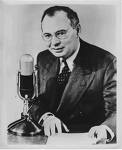 There are several direct techniques to produce and deepen a trance state. Traditionally there were considered to be five levels of trance to which you could descend deeper and deeper from one to the other. Probably these are just different states as most therapeutic work can be conducted in any of these states, even in what was considered a very light trance.
There are several direct techniques to produce and deepen a trance state. Traditionally there were considered to be five levels of trance to which you could descend deeper and deeper from one to the other. Probably these are just different states as most therapeutic work can be conducted in any of these states, even in what was considered a very light trance.
A summary of these techniques and examples of their application by Dave Elman are given here>>>>
Dave Elman’s book ‘Hypnotherapy’ discusses all of these in detail, with case histories for particular conditions.
Hypnotherapy Session
Traditional Direct Hypnosis Session
There are 5 distinct stages that follow one another in sequence
- 1. Pre Induction Period
- 2. Induction
- 3. Deepening
- 4. Therapeutic Sessions
- 5. Termination & Ratification
These 5 stages are discussed in detail here. Read more>>>
An important part of the pre-induction period and something that is also used in indirect methods is Rapport. Without rapport the induction and therapy is going to be difficult
Read more about rapport>>>
Ericksonian Indirect Hypnosis
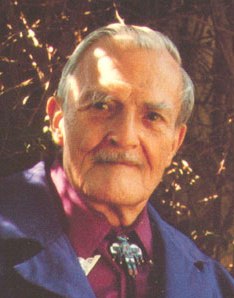 Milton Erickson developed an indirect hypnotherapy technique. There is no formal structure as in direct hypnosis, though this was helped by his advanced ability to analyze his clients from non verbal behavioral cues. Practitioners new to this field will still find the traditional hypnotherapy structure useful for diagnosis.
Milton Erickson developed an indirect hypnotherapy technique. There is no formal structure as in direct hypnosis, though this was helped by his advanced ability to analyze his clients from non verbal behavioral cues. Practitioners new to this field will still find the traditional hypnotherapy structure useful for diagnosis.
Ericksonian Hypnotic Induction Example Script
If you want an idea of what this all looks like when Put together, here is an example of a typical Erickson induction>>> a typical Erickson induction>>>
Milton H. Erickson Free Downloads - Complete Works
Complete Works - Table of Contents (pdf) 77KB
Hypnotherapy - An Exploratory Casebook (pdf) 2.31MB
Hypnotic Realities (pdf) 1.50MB
Experiencing Hypnosis (pdf) 1.13MB
Collected Papers (pdf) 11.16MB
Hypnotic Phenomena
As in traditional hypnosis, various hypnotic behaviors can be demonstrated with a patient.
Read more on types of hypnotic phenomena.
Suggestibility and Hypnotic Style
The difference between the traditional and the Ericksonian approach is the that types of phenomena demonstrated by a particular patent held important clues as to the style of hypnosis and the subsequent therapy to be used. People are generally more suggestible in one way rather than another. This is an important diagnostic step and suggests the best ‘hypnotic style’ to be used.
They tend to fall into one of four categories:
- 1. Sensory Input
- 2. Automatic behavior and dissociation
- 3. Time Changes
- 4. Memory
Read more on suggestibility and hypnotic style>>>
Hypnotic Language
The most important technique in indirect hypnosis is probably the language use. Specific sentence structures have a very persuasive and hypnotic effect. There are some excellent books to be found on this subject but it is not well documented online.
- Mind Reading
- Lost Performative
- Cause Effect
- Complex Equivalence
- Presupposition
- Quantifiers
- Modal Operators
- Nominalizations
- Unspecified Verb
- Tag Questions
- Conversational Postulate
- Referential Index
- Comparative Deletion
- Hypnotic Pacing
- Ordinal Numbers
- Double Bind
- Selectional Restriction Violation
- Ambiguity
- Utilization
- Embedded Commands
Historical Hypnosis - James Braid
James Braid was one of the founding fathers of modern hypnotherapy and first used the term 'hypnosis'. His original work 'Neurypnology' is reproduced here in its entirety. Neurypnology was the term he later favored as he considered 'hypnosis' to be a misnomer.
James Braid - Neurypnology
Hypnosis Bibliography
A list of currently available books and research papers. See the reading list>>>
Hypnosis Unwrapped - Training DVD
(Triple DVD) "There are many collections of CDs that take you through the process of self hypnosis, or act as aids, but this collection is particularly well regarded." The Sunday Times newspaper, August 2007
![]()
Hypnosis Training
(CD or tape)
How to Use Hypnosis to Help Yourself and Others is an excellent guide to learning to hypnotize self. Not for the professional, unless you are researching techniques to teach your clients.














